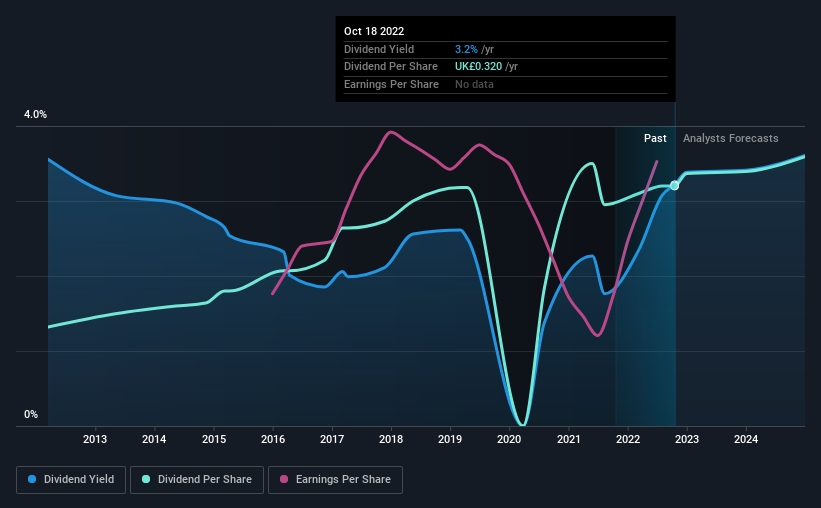- United Kingdom
- /
- Metals and Mining
- /
- LSE:HILS
Hill & Smith Holdings' (LON:HILS) Upcoming Dividend Will Be Larger Than Last Year's

Hill & Smith Holdings PLC (LON:HILS) has announced that it will be increasing its dividend from last year's comparable payment on the 6th of January to £0.13. This takes the annual payment to 3.2% of the current stock price, which unfortunately is below what the industry is paying.
Check out the opportunities and risks within the GB Metals and Mining industry.
Hill & Smith Holdings' Payment Has Solid Earnings Coverage
While yield is important, another factor to consider about a company's dividend is whether the current payout levels are feasible. Prior to this announcement, Hill & Smith Holdings' dividend was only 52% of earnings, however it was paying out 112% of free cash flows. While the company may be more focused on returning cash to shareholders than growing the business at this time, we think that a cash payout ratio this high might expose the dividend to being cut if the business ran into some challenges.
The next year is set to see EPS grow by 32.2%. Assuming the dividend continues along recent trends, we think the payout ratio could be 40% by next year, which is in a pretty sustainable range.

Dividend Volatility
The company's dividend history has been marked by instability, with at least one cut in the last 10 years. Since 2012, the dividend has gone from £0.132 total annually to £0.32. This works out to be a compound annual growth rate (CAGR) of approximately 9.3% a year over that time. We have seen cuts in the past, so while the growth looks promising we would be a little bit cautious about its track record.
Hill & Smith Holdings May Find It Hard To Grow The Dividend
Given that the dividend has been cut in the past, we need to check if earnings are growing and if that might lead to stronger dividends in the future. Although it's important to note that Hill & Smith Holdings' earnings per share has basically not grown from where it was five years ago, which could erode the purchasing power of the dividend over time. The company has been growing at a pretty soft 1.0% per annum, and is paying out quite a lot of its earnings to shareholders. While this isn't necessarily a negative, it definitely signals that dividend growth could be constrained in the future unless earnings start to pick up again.
Our Thoughts On Hill & Smith Holdings' Dividend
In summary, while it's always good to see the dividend being raised, we don't think Hill & Smith Holdings' payments are rock solid. With cash flows lacking, it is difficult to see how the company can sustain a dividend payment. Overall, we don't think this company has the makings of a good income stock.
Market movements attest to how highly valued a consistent dividend policy is compared to one which is more unpredictable. However, there are other things to consider for investors when analysing stock performance. As an example, we've identified 2 warning signs for Hill & Smith Holdings that you should be aware of before investing. If you are a dividend investor, you might also want to look at our curated list of high yield dividend stocks.
Valuation is complex, but we're here to simplify it.
Discover if Hill & Smith might be undervalued or overvalued with our detailed analysis, featuring fair value estimates, potential risks, dividends, insider trades, and its financial condition.
Access Free AnalysisHave feedback on this article? Concerned about the content? Get in touch with us directly. Alternatively, email editorial-team (at) simplywallst.com.
This article by Simply Wall St is general in nature. We provide commentary based on historical data and analyst forecasts only using an unbiased methodology and our articles are not intended to be financial advice. It does not constitute a recommendation to buy or sell any stock, and does not take account of your objectives, or your financial situation. We aim to bring you long-term focused analysis driven by fundamental data. Note that our analysis may not factor in the latest price-sensitive company announcements or qualitative material. Simply Wall St has no position in any stocks mentioned.
About LSE:HILS
Hill & Smith
Manufactures and supplies infrastructure products in the United Kingdom, rest of Europe, North America, the Middle East, rest of Asia, and internationally.
Flawless balance sheet with proven track record and pays a dividend.
Market Insights
Community Narratives


